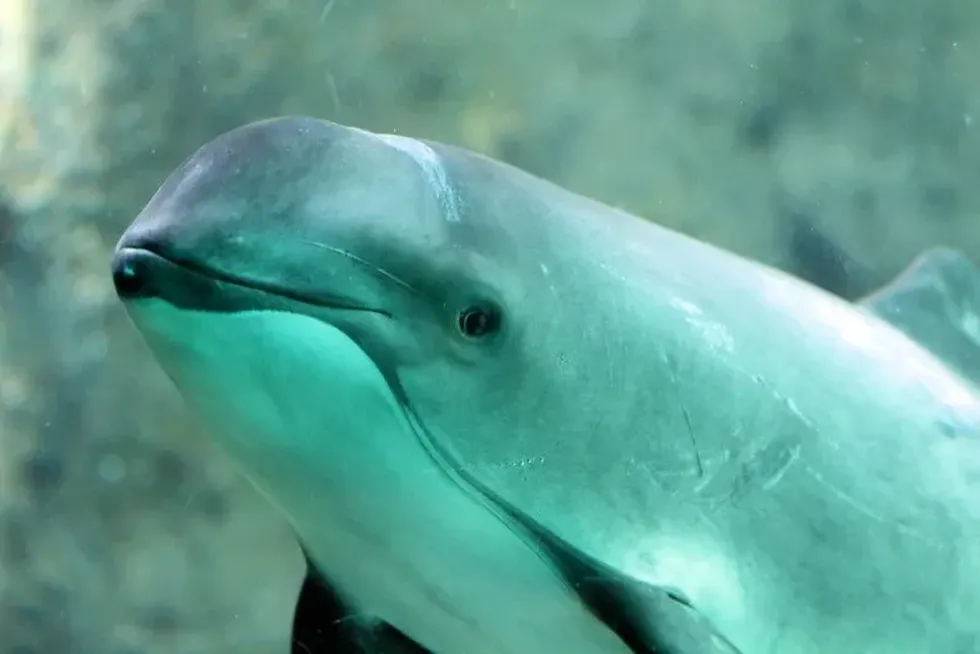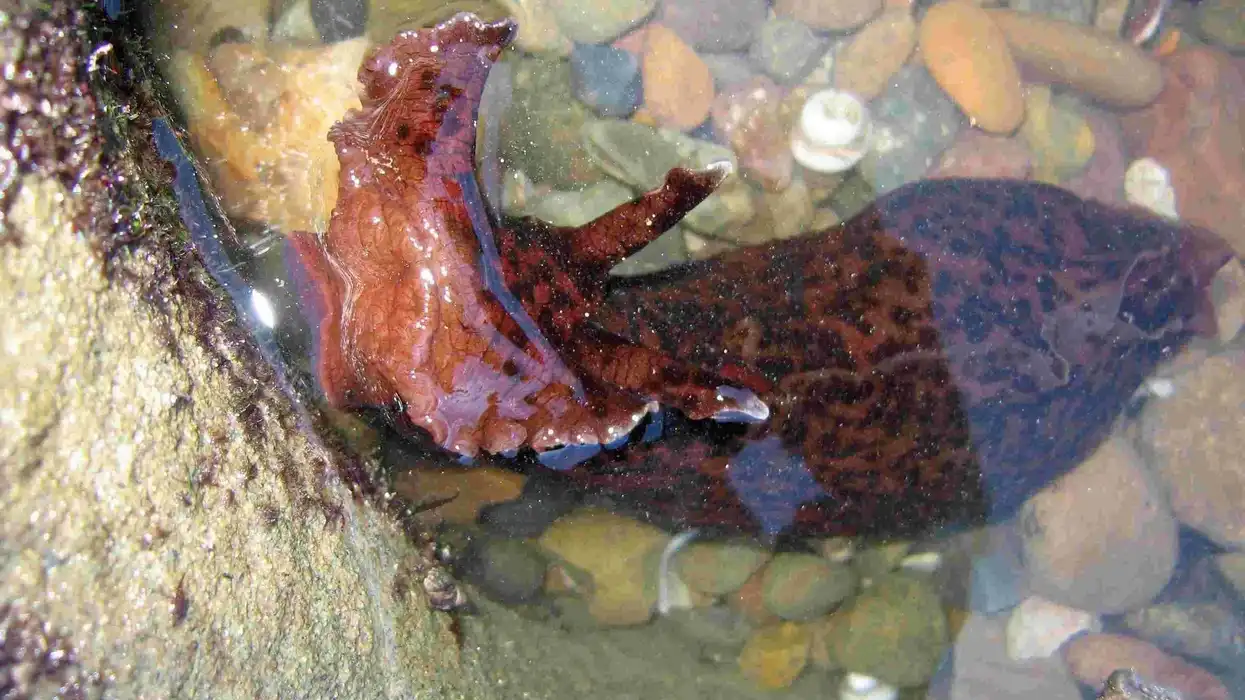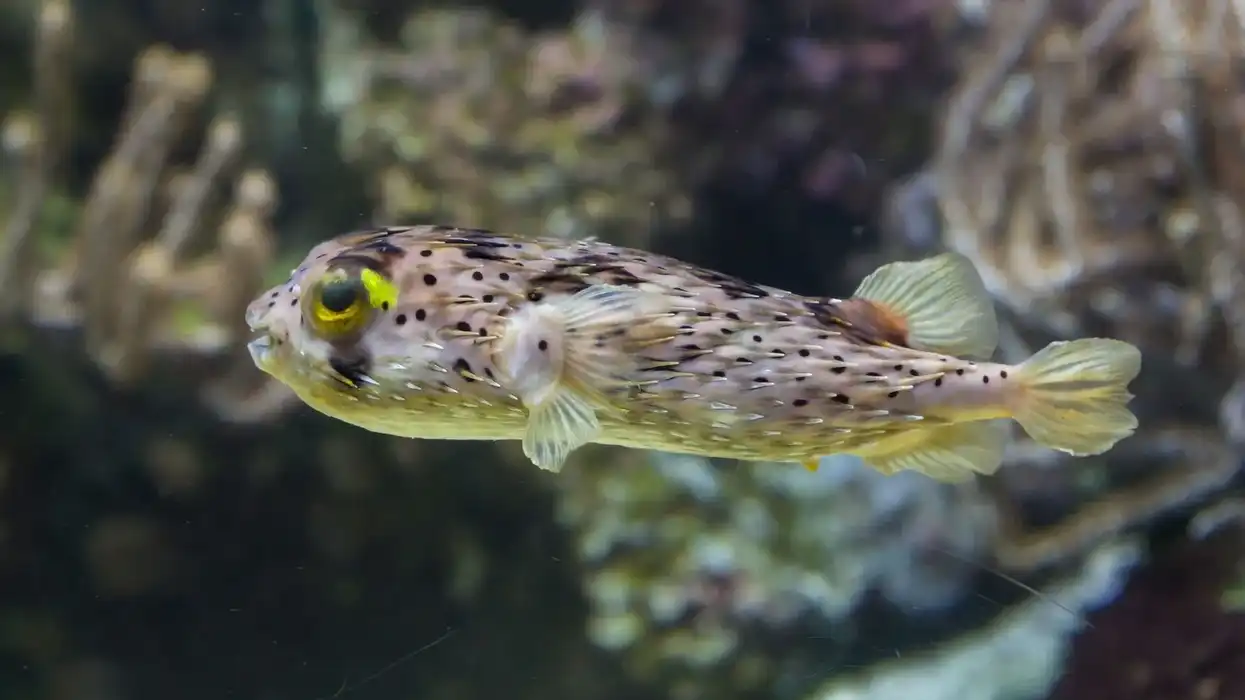A harbour porpoise (Genus: Harbour porpoise Phocoena) can best be described as a shy animal. Their scientific name is Phocoena phocoena.
They are often seen in groups of two or three and are most commonly found in bays, harbors, and estuaries. Harbour porpoirses have been spotted hundreds of miles from the ocean as well.
Harbour porpoises are common prey of large sharks and dolphins. They are highly intelligent and one of the few animals who can recognize themselves in the mirrors.
Harbour porpoises are disturbed by human disturbances that cause a rift underwater and are vulnerable to pollution and fishing traps. There is a common question due to the similar appearance of a porpoise and a dolphin, whether is a dolphin a porpoise?
The debate on porpoises versus dolphins is an ongoing one. They both have different characteristic features.
Harbour porpoises are relatively small as compared to dolphins as they have a round head, dark lips, and no beak. One of the most distinctive feature of harbour porpoises is a small triangular fin which is present towards center of the back.
Harbor porpoises (Phocoena phocoena) form small groups for hunting to catch fishes like sardines, herring, cod which form an integral part of their diet. Though they can dive beyond 650 ft, porpoises live near the surface as they must breathe after every 25 seconds which is accompanies with a puffing noise.
Read on for some more interesting information on harbor porpoises. After you are done reading these interesting facts on harbor porpoises, do check out more information on false killer whale and porpoise as well.
Harbour Porpoise Interesting Facts
What type of animal is a harbour porpoise?
A harbour porpoise comes under as one of the smallest out of the seven species of the porpoises (Phocoena phocoena). It is also one of the smallest sea mammals. They are very shy mammals when it comes to interacting with humans.
It is a shy but very intelligent mammal. They are often seen in groups of two or three and stay close to the coastal areas or river estuaries. They prefer to remain near the sea surface for ease of breathing which is accompanied with a puffing sound.
What class of animal does a harbour porpoise belong to?
They belong to the sea mammal class because of their ability to give birth. They are shy, and their number is gradually decreasing because of threats like overfishing and human underwater noise. Their population is concentrated around North Atlantic and North Pacific oceans.
How many harbour porpoises are there in the world?
There are approximately 700,000 harbour porpoises around the world and this number is annually decreasing because of the human imposed threat on these mammals.
Where does a harbour porpoise live?
A harbour porpoise generally lives in the temperate and subarctic waters of the North Atlantic, north pacific, and the black sea.
What is a harbour porpoise's habitat?
The preferred habitat of a harbour porpoise is saltwater and freshwater, found near bays, coasts, harbours, and also rivers. They usually like waters that are not more than 650m deep. Their population is predominantly found near the north Atlantic, north Pacific, and Black Sea.
Who do harbour porpoises live with?
A harbour porpoise generally lives in pairs and sometimes in small groups of 6-10. They also occasionally live in larger groups of around 50-100. They primarily live near coastal waters.
How long does a harbour porpoise live?
The average life span of a harbour porpoise is between 8-10 years. But with healthy waters and lesser threats, they can also live up to 20 years.
How do they reproduce?
Harbour porpoises follow the lateralized mating behaviors. Males attempt copulation by approaching a female exclusively on her left side. Their mating season occurs between June and September. Since they give birth only once a year, they are considered a slowly reproducing species and depend on successful mating seasons. They develop sexual maturity four years after their birth.
What is their conservation status?
The number of harbour porpoises is decreasing annually and they feature in IUCN red list. This primarily due to the fact that they get caught in fishing nets. These are commercial fishing nets and fishing gear that is meant for other species.
Most of the times the porpoises get caught in commercial fishing gear and drown. As a matter of fact, entanglement in fishing nets is the biggest threat for harbor porpoises. Noise pollution and chemical poisoning is another reason behind dwindling population.
Harbour Porpoise Fun facts
What do harbour porpoises look like?
They are one of the smallest marine mammals with a short body. They have a tiny blunt bleak and a medium-sized triangular dorsal fin.
They are dark grey in color and are faded light grey along the sides. They have a white belly and throat and a gray chin patch. The triangular dorsal fin can be regarded as one of the most distinctive features.
How cute are they?
Their small size and blunt beak make them look very cute. They are also shy mammals and are very intelligent.
How do they communicate?
The harbour porpoise uses echolocation to communicate and hunt its prey, such as the fish and the squids. They emit strong ultrasonic signals in a narrow sound beam to communicate. They also listen to echoes and figure their way out. They also send out high-frequency, short-range and narrowband clicks.
How big is a harbour porpoise?
They are one of the smallest marine mammals who are 5ft in height and weigh up to 120 lb.
How fast can a harbour porpoise swim?
They are swift swimmers in comparison to seals and can swim up to 16 mph near a marine surface.
How much does a harbour porpoise weigh?
A harbour porpoise weighs up to 120 lb.
What are their male and female names of the species?
They don’t have distinct names based on sex. The harbour porpoises are just termed as a male harbour porpoise and a female harbour porpoise.
What would you call a baby harbour porpoise?
A baby harbour porpoise is called a pup or calve.
What do they eat?
They usually feed on non-spiny fishes like herring, cod, mackerel, sardines, squid, octopus.
Are they dangerous?
Harbour porpoises are wild marine animals and can impose a threat on humans. They can be dangerous at times.
Would they make a good pet?
No, harbour porpoise fish cannot be kept as a pet. They are wild creatures and can impose a great threats on humans. They live in a specific environment, and if they don't receive their suitable habitat, it can be dangerous for their health.
Did you know...
They are one of the smallest marine mammals.
They are very intelligent and have long-term memory.
They are one of the very few mammals who can recognize themselves in the mirror.
The term porpoise comes from the Latin word for pigs, which is why sometimes the harbor porpoises are sometimes called puffing pigs as they make a puffing sound while breathing.
They make a different sound when they breathe.
They are very shy and quiet when it comes to interacting with humans.
How many harbour porpoise are left?
The estimated population for harbour porpoises is around 700,000 in the world.
What do dolphins and porpoises have in common?
Dolphins and porpoises have some similarities that make them look alike. However, if observed closely, they are different mammals. Below is a list of similarities and differences of a dolphin or porpoise.
Below is a list of similarities.
Both dolphins and harbor porpoises breathe air.
Both are warm blooded.
Both of them, being mammals, give birth to their young ones.
Both nurse their young ones with milk.
They also consume the same food.
Both the dolphins and harbor porpoises are capable of echolocation to communicate with their fellow mates.
Below is a list of differences between dolphin and porpoise.
The dolphin family has a greater diversity with 40 plus species as when compared to the porpoise family, which has only six species.
Most dolphins have a streamlined body and a beak-shaped mouth with conical-shaped teeth. While the porpoises have a bulbous-shaped body with spade-shaped teeth that lack a beak.
Dolphins have flexible necks, and they keep moving their necks while porpoises have stiff and immobile necks.
Porpoises have stockier bodies than most of the dolphin species.
Porpoises, as compared to the dolphins, have an overall smaller dorsal fin.
Dolphins are larger than porpoises.
Some dolphins’ species can be observed leaping out of the water, confident and bow, and approaching the passing boats. Porpoises, on the other hand, are more reserved and shy. They are quiet when it comes to interacting with humans.
Here at Kidadl, we have carefully created lots of interesting family-friendly animal facts for everyone to discover! Learn more about some other mammals including spinner dolphin, or fur seal.
You can even occupy yourself at home by drawing one on our Harbour Porpoise coloring pages.









